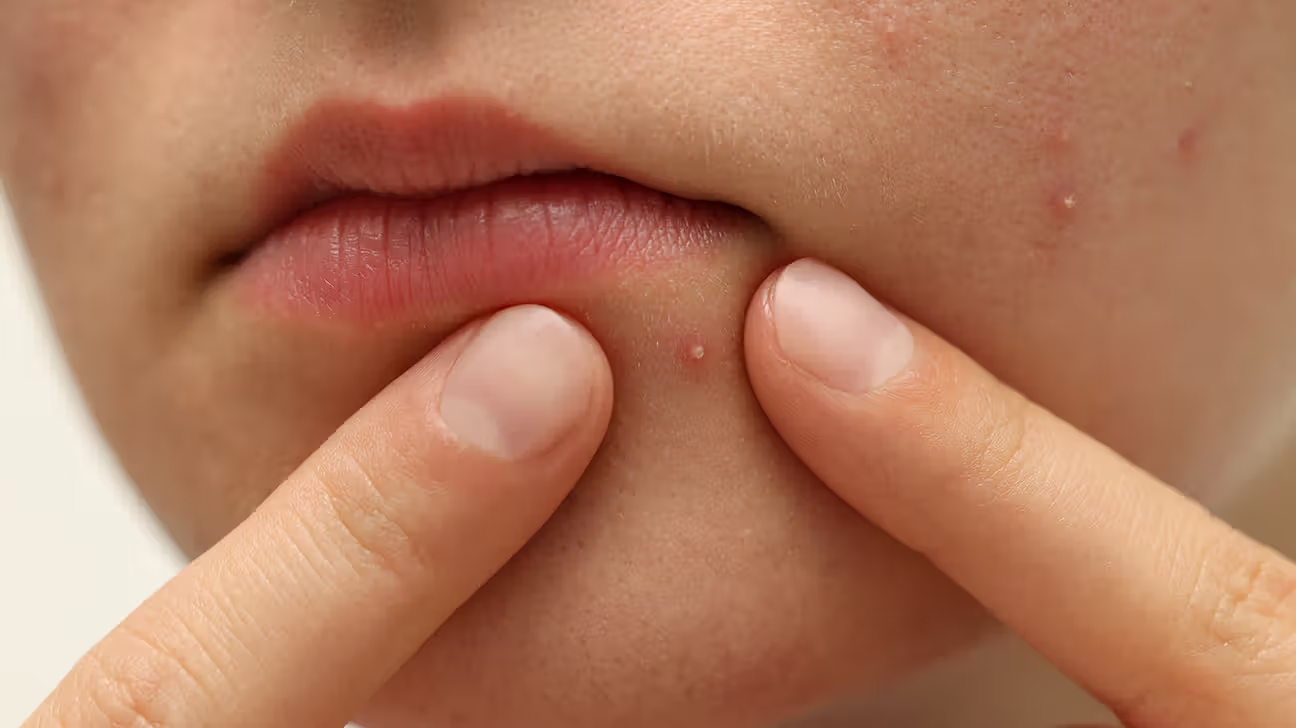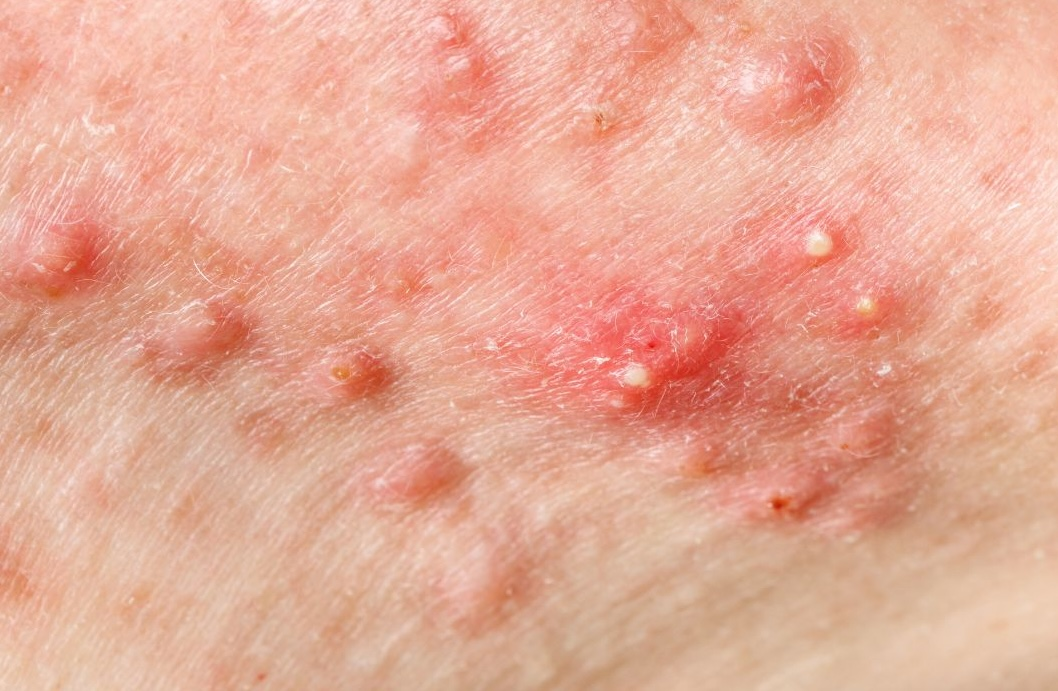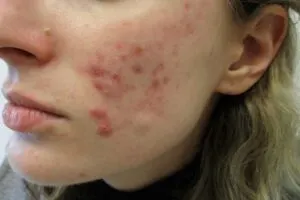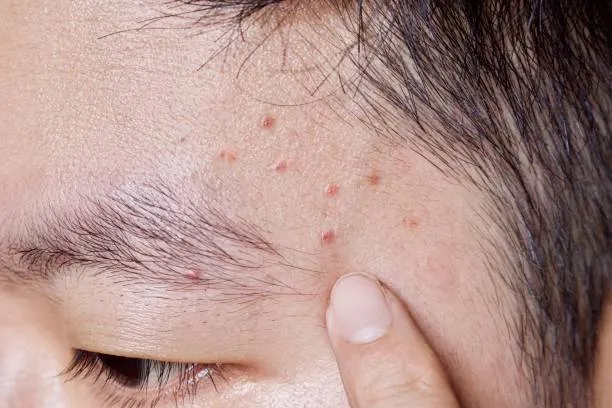Peter White
Ajna Chakra
- Joined
- Nov 2, 2025
- Posts
- 173
- Reputation
- 132
Disclaimer:
I know there is already many posts about skin care, I have yet to see any talking about different types of conditions, so this post is all about different skin and acne types, and products or treatments you can do to treat the acne. I am not a professional, contact a dermatologist before taking or doing anything risky.
What are the different skin types?
The main skin types are normal, dry and oily, there are also sub-factors such as sensitivity and combination zones. Understanding your skin type will help you choose the right skincare.
Normal skin is balanced. It’s not too oily, not too dry, and usually feels comfortable all day. Pores are small, texture is smooth, and you rarely experience flakiness or excessive shine. If your face feels fresh and looks even without needing much effort, you probably have normal skin.
Dry skin lacks oil and moisture. It can feel tight or rough, especially after cleansing. You might notice flaking or fine lines becoming more visible. This type often struggles with dullness and needs consistent hydration, both from moisturisers and enough water intake.
Oily skin produces excess sebum, giving the face a shiny or greasy appearance, especially in the T-zone (forehead, nose, chin). Pores tend to be larger, and breakouts or blackheads are more common. The pro of oily skin is that it often ages more slowly because natural oils protect against fine lines.
Figure 1.0

Figure 1.0 shows the texture of each skin type.
How do I detect my skin type?
To know what types of skin you have you can try this simple test:
1. Wash your face with gentle cleanser.
2. Leave it bare (no products) for an hour.
3. Press a clean tissue or blotting paper on different areas of your skin.
If the tissue picks up oil all over, you have oily skin.
If tissue picks up nothing and there is noticeable flaking and/or dryness, you have dry skin.
If the tissue picks up nothing, and there is no noticeable dryness on your skin your most likely normal.
There is also combinations such as the T-Zone (forehead, nose and chin), where some sections are more oily or dry than others.
What is skin sensitivity?
Unlike oily or dry skin, this isn't a type it's rather a condition that can occur in any of the above skin types. The skin can easily become irritated, itchy, burning and red.
Skin sensitivity usually happens when the skin’s protective barrier weakens, allowing irritants, allergens, and microbes to penetrate more easily and trigger inflammation. This can result from over-exfoliation, harsh cleansers, environmental stress (like cold, heat, or pollution), or even genetics that affect barrier proteins such as filaggrin. Once the barrier is compromised, nerve endings in the skin become overreactive, causing stinging, burning, or redness even from mild products or water.
TLDR; sensitive skin is usually the result of a damaged barrier and an overactive inflammatory or sensory response.
Your skin is alive!
On your face lives a whole ecosystem called the skin microbiome. Billions of microorganisms (mostly bacteria, but also fungi and even tiny mites) that form a balanced community. When this ecosystem is healthy, it protects your skin like an invisible armour; when it’s disrupted, that same army can turn against you.
Healthy skin sits at a slightly acidic pH of around 4.7 to 5.5. This mild acidity keeps the microbiome balanced and strengthens the acid mantle (thin film of sebum, sweat, and dead cells that acts as your first defense against harmful bacteria, pollution, and moisture loss). When your pH becomes too alkaline (from harsh soaps, over-cleansing, or abrasive scrubs), the acid mantle weakens. Beneficial bacteria die off, the bad ones thrive, and your skin can become dry, tight, and more prone to irritation or breakouts.
Different types of acne.
Acne isn't just pimples, it's a wide spread spectrum of conditions/issues. Here I will breakdown the most common types of acne, their causes and what they look like.
1. Comedonal Acne (blackheads and whiteheads) - Caused by Blocked pores from excess sebum and dead skin cells.
This is the mildest form of acne and it doesn't cause inflammation, it's often linked to poor exfoliation, comedogenic ingredients, or hormonal imbalances that increase sebum production.
• Whiteheads: Clogged pores that are sealed at the surface, forming small flesh or white coloured bumps. They can feel like tiny grains under the skin. Left side of Figure 1.1.
• Blackheads: Pore that is open, and the oil inside oxidises when exposed to air, turning dark. Unlike many believe that the dark colour comes from dirt. Right side of Figure 1.1.
Figure 1.1

2. Papules - Inflammation caused by trapped oil and bacteria under the skin. They form when the wall of a hair follicle breaks from pressure causing redness and swelling (Figure 1.2). They're small, raised, red and tender, but there is no visible pus. Usually trigged by overproduction of oil, bacterial overgrowth, or using irritating skincare products that inflame the pore lining.
Figure 1.2

3. Pustules - these are infected papules filled with pus. Pustules are what people usually refer to as "pimples", white red bumps with red/yellow centre (Figure 1.3). Essentially papules with visible pus.
They are usually caused by hormonal changes, stress, poor hygiene, or over use of thick creams or oils that trap bacteria.
Figure 1.3

4. Nodules - Deep infection within the follicle and surrounding tissue. They are painful lumps under the skin with no visible head, and they do not contain pus (Figure 1.4). The inflammation runs deep, often lasting for weeks. Unlike surface acne, nodules won’t respond to over-the-counter treatments easily because the infection is below the skin barrier.
These are usually caused by severe hormonal imbalance, genetics, and chronic inflammation. These often need professional treatment (like prescription retinoids or anti-inflammatory therapy).
Figure 1.4

5. Cystic acne - Severe inflammation and bacterial infection deep in the dermis. They are the most severe type of acne. They’re soft, pus-filled lumps that can be painful and lead to scarring (Figure 1.5). They occur when bacteria, oil, and dead skin get trapped deep within pores, causing an immune response that forms a large pocket of infection.
Usually caused by hormonal surges (like during puberty), diet high in refined sugars or dairy, and stress
Figure 1.5

6. Fungal Acne (Malassezia Folliculitis) - Caused by Overgrowth of Malassezia yeast in hair follicles, not bacteria. Often mistaken for regular acne, fungal acne shows up as uniform, itchy, small bumps (Figure 1.6). usually on the chest, shoulders, or forehead. It thrives in warm, humid environments or after antibiotic use (which kills bacteria but lets yeast overgrow).
Key difference: Itchy, monomorphic bumps that don’t respond to normal acne treatments
Figure 1.6

7. Hormonal Acne - Caused by fluctuating hormones, particularly androgens (testosterone, DHEA). typically appears along the jawline, chin, and lower cheeks, especially in adults (Figure 1.7). It flares cyclically and involves deep, painful cystic lesions. Trigged by cortisol spikes and conditions like PCOS.
Figure 1.7

8. Acne Mechanica - Caused by Friction, pressure, or heat trapping sweat and bacteria. Commonly seen in athletes or from face masks, helmets, and tight clothing. The mechanical irritation clogs pores and causes breakouts (Figure 1.8).
Figure 1.8

9. Acne Rosacea - Chronic inflammation and vascular sensitivity, not clogged pores. Rosacea can look like acne with red bumps and pustules (Figure 1.9), but it’s actually a vascular condition involving dilated blood vessels and skin sensitivity. It’s triggered by heat, alcohol, spicy food, or stress.
Figure 1.9

Okay finally were past all the acne types and skin types! Now I am going to talk about products and treatments for all the different cases.
Before I start, please keep in mind the most important part of skin care is not the treatments or products you use, it's taking care of your body by hydration (drinking 2-3L of water), correct diet (eating organic high quality food, and limiting processed sugars), high quality sleep, exercise and hygiene.
What products should you use
In this section I'll list many types products and what they are good for.
PRODUCTS
I know there is already many posts about skin care, I have yet to see any talking about different types of conditions, so this post is all about different skin and acne types, and products or treatments you can do to treat the acne. I am not a professional, contact a dermatologist before taking or doing anything risky.
What are the different skin types?
The main skin types are normal, dry and oily, there are also sub-factors such as sensitivity and combination zones. Understanding your skin type will help you choose the right skincare.
Normal skin is balanced. It’s not too oily, not too dry, and usually feels comfortable all day. Pores are small, texture is smooth, and you rarely experience flakiness or excessive shine. If your face feels fresh and looks even without needing much effort, you probably have normal skin.
Dry skin lacks oil and moisture. It can feel tight or rough, especially after cleansing. You might notice flaking or fine lines becoming more visible. This type often struggles with dullness and needs consistent hydration, both from moisturisers and enough water intake.
Oily skin produces excess sebum, giving the face a shiny or greasy appearance, especially in the T-zone (forehead, nose, chin). Pores tend to be larger, and breakouts or blackheads are more common. The pro of oily skin is that it often ages more slowly because natural oils protect against fine lines.
Figure 1.0

Figure 1.0 shows the texture of each skin type.
How do I detect my skin type?
To know what types of skin you have you can try this simple test:
1. Wash your face with gentle cleanser.
2. Leave it bare (no products) for an hour.
3. Press a clean tissue or blotting paper on different areas of your skin.
If the tissue picks up oil all over, you have oily skin.
If tissue picks up nothing and there is noticeable flaking and/or dryness, you have dry skin.
If the tissue picks up nothing, and there is no noticeable dryness on your skin your most likely normal.
There is also combinations such as the T-Zone (forehead, nose and chin), where some sections are more oily or dry than others.
What is skin sensitivity?
Unlike oily or dry skin, this isn't a type it's rather a condition that can occur in any of the above skin types. The skin can easily become irritated, itchy, burning and red.
Skin sensitivity usually happens when the skin’s protective barrier weakens, allowing irritants, allergens, and microbes to penetrate more easily and trigger inflammation. This can result from over-exfoliation, harsh cleansers, environmental stress (like cold, heat, or pollution), or even genetics that affect barrier proteins such as filaggrin. Once the barrier is compromised, nerve endings in the skin become overreactive, causing stinging, burning, or redness even from mild products or water.
TLDR; sensitive skin is usually the result of a damaged barrier and an overactive inflammatory or sensory response.
Your skin is alive!
On your face lives a whole ecosystem called the skin microbiome. Billions of microorganisms (mostly bacteria, but also fungi and even tiny mites) that form a balanced community. When this ecosystem is healthy, it protects your skin like an invisible armour; when it’s disrupted, that same army can turn against you.
Healthy skin sits at a slightly acidic pH of around 4.7 to 5.5. This mild acidity keeps the microbiome balanced and strengthens the acid mantle (thin film of sebum, sweat, and dead cells that acts as your first defense against harmful bacteria, pollution, and moisture loss). When your pH becomes too alkaline (from harsh soaps, over-cleansing, or abrasive scrubs), the acid mantle weakens. Beneficial bacteria die off, the bad ones thrive, and your skin can become dry, tight, and more prone to irritation or breakouts.
Different types of acne.
Acne isn't just pimples, it's a wide spread spectrum of conditions/issues. Here I will breakdown the most common types of acne, their causes and what they look like.
1. Comedonal Acne (blackheads and whiteheads) - Caused by Blocked pores from excess sebum and dead skin cells.
This is the mildest form of acne and it doesn't cause inflammation, it's often linked to poor exfoliation, comedogenic ingredients, or hormonal imbalances that increase sebum production.
• Whiteheads: Clogged pores that are sealed at the surface, forming small flesh or white coloured bumps. They can feel like tiny grains under the skin. Left side of Figure 1.1.
• Blackheads: Pore that is open, and the oil inside oxidises when exposed to air, turning dark. Unlike many believe that the dark colour comes from dirt. Right side of Figure 1.1.
Figure 1.1

2. Papules - Inflammation caused by trapped oil and bacteria under the skin. They form when the wall of a hair follicle breaks from pressure causing redness and swelling (Figure 1.2). They're small, raised, red and tender, but there is no visible pus. Usually trigged by overproduction of oil, bacterial overgrowth, or using irritating skincare products that inflame the pore lining.
Figure 1.2

3. Pustules - these are infected papules filled with pus. Pustules are what people usually refer to as "pimples", white red bumps with red/yellow centre (Figure 1.3). Essentially papules with visible pus.
They are usually caused by hormonal changes, stress, poor hygiene, or over use of thick creams or oils that trap bacteria.
Figure 1.3

4. Nodules - Deep infection within the follicle and surrounding tissue. They are painful lumps under the skin with no visible head, and they do not contain pus (Figure 1.4). The inflammation runs deep, often lasting for weeks. Unlike surface acne, nodules won’t respond to over-the-counter treatments easily because the infection is below the skin barrier.
These are usually caused by severe hormonal imbalance, genetics, and chronic inflammation. These often need professional treatment (like prescription retinoids or anti-inflammatory therapy).
Figure 1.4

5. Cystic acne - Severe inflammation and bacterial infection deep in the dermis. They are the most severe type of acne. They’re soft, pus-filled lumps that can be painful and lead to scarring (Figure 1.5). They occur when bacteria, oil, and dead skin get trapped deep within pores, causing an immune response that forms a large pocket of infection.
Usually caused by hormonal surges (like during puberty), diet high in refined sugars or dairy, and stress
Figure 1.5

6. Fungal Acne (Malassezia Folliculitis) - Caused by Overgrowth of Malassezia yeast in hair follicles, not bacteria. Often mistaken for regular acne, fungal acne shows up as uniform, itchy, small bumps (Figure 1.6). usually on the chest, shoulders, or forehead. It thrives in warm, humid environments or after antibiotic use (which kills bacteria but lets yeast overgrow).
Key difference: Itchy, monomorphic bumps that don’t respond to normal acne treatments
Figure 1.6

7. Hormonal Acne - Caused by fluctuating hormones, particularly androgens (testosterone, DHEA). typically appears along the jawline, chin, and lower cheeks, especially in adults (Figure 1.7). It flares cyclically and involves deep, painful cystic lesions. Trigged by cortisol spikes and conditions like PCOS.
Figure 1.7

8. Acne Mechanica - Caused by Friction, pressure, or heat trapping sweat and bacteria. Commonly seen in athletes or from face masks, helmets, and tight clothing. The mechanical irritation clogs pores and causes breakouts (Figure 1.8).
Figure 1.8

9. Acne Rosacea - Chronic inflammation and vascular sensitivity, not clogged pores. Rosacea can look like acne with red bumps and pustules (Figure 1.9), but it’s actually a vascular condition involving dilated blood vessels and skin sensitivity. It’s triggered by heat, alcohol, spicy food, or stress.
Figure 1.9

Okay finally were past all the acne types and skin types! Now I am going to talk about products and treatments for all the different cases.
Before I start, please keep in mind the most important part of skin care is not the treatments or products you use, it's taking care of your body by hydration (drinking 2-3L of water), correct diet (eating organic high quality food, and limiting processed sugars), high quality sleep, exercise and hygiene.
What products should you use
In this section I'll list many types products and what they are good for.
PRODUCTS
| Product Type | Purpose/Function | Best Skin Type | Helps with (acne type) | Key ingredient |
|---|---|---|---|---|
| Gel Cleanser | Deep cleans pores, removes excess oil | Oily / Combination | Comedonal acne | Niacinamide, Salicylic Acid |
| Cream Cleanser | Hydrates while cleansing | Dry / Sensitive | Prevents irritation | Ceramides, Glycerin |
| Exfoliating Cleanser | Mild daily exfoliation | Oily / Congested | Comedonal acne | Lactic Acid, BHA |
| Hydrating Toner | Adds moisture & soothes skin | Dry / Sensitive | Barrier repair | Hyaluronic Acid |
| Exfoliating Toner | Clears pores & smooths texture | Oily / Combination | Blackheads, Papules | Glycolic Acid, BHA |
| Gel Moisturizer | Lightweight hydration | Oily / Combination | All acne types | Hyaluronic Acid |
| Cream Moisturizer | Deeply nourishes skin | Dry / Sensitive | Irritation recovery | Ceramides, Squalane |
| Barrier Repair Cream | Strengthens damaged barrier | Sensitive / Over-treated | Redness, post-acne healing | Niacinamide, Fatty Acids |
| Niacinamide | Balances oil, calms redness | All | Mild acne, large pores | Niacinamide, Zinc |
| Retinol (Vitamin A) | Boosts cell turnover, unclogs pores. | Oily / Aging | Cystic, Nodular, Comedonal | Retinol, Retinal |
| Vitamin C Serum | Brightens, fades dark spots | Normal / Dry | Post-acne marks | L-Ascorbic Acid |
| Hyaluronic Acid | Deep hydration & plumpness | All | Dehydration, recovery | Hyaluronic Acid |
| Azelaic Acid | Anti-bacterial & pigment-reducing | Sensitive / Rosacea-prone | Papules, Pustules | Azelaic Acid |
| AHA (Glycolic/Lactic) | Surface exfoliation | Normal / Dry | Whiteheads, uneven tone | Glycolic Acid |
| BHA (Salicylic Acid) | Unclogs pores, reduces oil | Oily / Acne-prone | Blackheads, papules | Salicylic Acid |
| Clay Mask | Draws out oil & impurities | Oily / Combo | Blackheads | Kaolin, Bentonite |
| Sulfur Mask | Kills acne bacteria | Oily / Acne-prone | Cystic, Pustular | Sulfur, Zinc Oxide |
| Sunscreen (Mineral) | Blocks UV, reduces post-acne marks | Sensitive / Acne-prone | All Types | Zinc Oxide |
| Sunscreen (Chemical) | Lightweight UV protection | Normal / Dry | Pigmentation | Avobenzone |
What medication should you use
In this section I'll list many types medication and what they are good for.
MEDICATION
| Medication / Active | Purpose | Best For (Skin Type) | Helps with (acne types) | OTC / RX |
|---|---|---|---|---|
| Benzoyl Peroxide | Kills acne-causing bacteria (C. acnes) | Oily / Acne-prone | Papules, Pustules | OTC |
| Adapalene (Retinoid) | Regulates turnover, prevents clogging | All | Comedonal, Cystic | OTC (0.1%) RX (0.3%) |
| Azelaic Acid (higher strength) | Reduces bacteria & pigmentation | Sensitive / Rosacea | Papules, Post-inflammatory marks | RX (15-20%) |
| Clindamycin / Erythromycin | Topical antibiotic, reduces inflammation | Oily / Combo | Pustules, Papules | RX |
| Tretinoin (Retinoic Acid) | Strong cell turnover, collagen boost | Normal / Oily | Cystic, Nodular, Scarring | RX |
| Spironolactone (Oral) | Reduces androgen-driven oil production | Oily / Hormonal | Hormonal acne | RX |
| Oral Antibiotics (Doxycycline) | Reduces inflammation & bacteria | Oily / Combo | Severe cystic acne | RX |
| Isotretinoin (Accutane) | Permanently reduces sebum production | Oily / Severe acne | Cystic, Nodular | RX |
| Zinc (Picolinate / Gluconate) | Anti-inflammatory, reduces sebum | All | Mild acne, healing | OTC Supplement |
| DIM (Diindolylmethane) | Balances estrogen/testosterone | Hormonal / Adult | Hormonal acne | OTC Supplement |
| Omega-3 Fatty Acids | Reduces inflammation & regulates oil | Dry / Combo | All acne types | OTC Supplement |
| Probiotics | Supports gut–skin axis | All | Fungal or stress-related acne | OTC Supplement |
| Collagen Peptides | Improves elasticity & healing | Aging / Dry | Post-acne texture | OTC Supplement |
What are some good treatments
This is the final section, here I will talk about different types of treatments that you can do to fight your acne.
TREATMENTS (HOME AND CLINIC)
| Treatment Type | Purpose / Mechanism | Best For (Skin Type) | Helps With (Acne Type / Concern) | Downtime / Risk |
|---|---|---|---|---|
| Chemical Peels (AHA/BHA/TCA) | Controlled exfoliation & resurfacing | Oily / Combo / Aging | Scars, blackheads, hyperpigmentation | 1-7 days |
| Microneedling | Stimulates collagen via micro-injury | Normal / Combo | Scarring, texture | 1-3 days redness |
| HydraFacial | Exfoliation + extraction + serum infusion | All | Congestion, dehydration | No downtime |
| Microdermabrasion | Physical exfoliation removes dead skin | Normal / Oily | Texture, dullness, mild scars | Mild redness |
| LED Light Therapy (Red/Blue) | Kills bacteria & reduces inflammation | All | Active acne, redness | None |
| Laser Resurfacing (CO₂/Fraxel) | Stimulates deep collagen remodeling | Normal / Oily | Scarring, pigmentation | 3–14 days |
| Radiofrequency Microneedling | Heat-induced collagen tightening | All except very sensitive | Acne scars, laxity | 3-5 days |
| Oxygen Facial | Infuses oxygen & serums | Dry / Sensitive | Dull, dehydrated skin | None |
| Enzyme / Clay Masks | Gentle exfoliation or oil control | Sensitive / Oily | Comedonal acne | None |
| Chemical Exfoliation | Mild resurfacing | Oily / Combo | Texture, clogged pores | Minimal irritation |
| Cryotherapy Facials | Reduces inflammation via cold exposure | All | Active acne, puffiness | None |
"Just use accutane g.
 "
"Thank you for reading!
Last edited:




